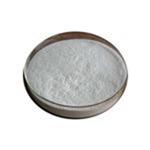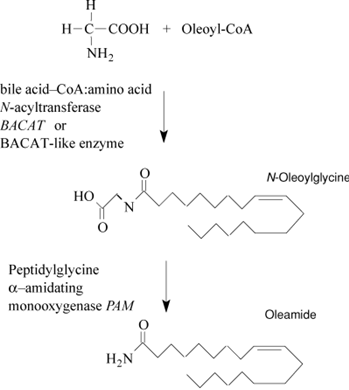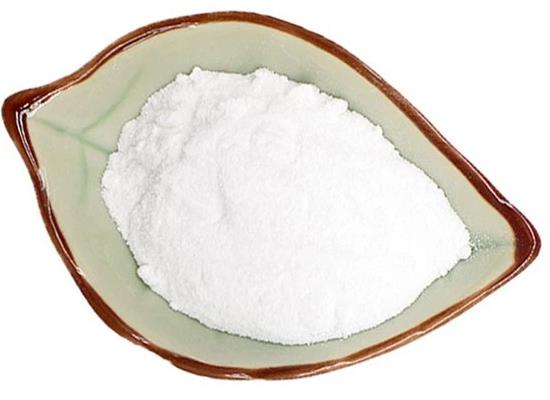Applications of Oleamide
Oleamide is an organic compound with the formula CH3(CH2)7CH=CH(CH2)7CONH2. Oleamide is the amide derived from the fatty acid oleic acid. Oleamide is a colorless waxy solid and occurs in nature. Sometimes labeled as a fatty acid primary amide (FAPA), Oleamide is biosynthesized from N-oleoylglycine[1]. Oleamide is a fatty amide derived from oleic acid. Oleamide has a role as a human metabolite and a plant metabolite. Oleamide is a fatty amide and a primary fatty amide. Oleamide is an amide of the fatty acid oleic acid. Oleamide is an endogenous substance: Oleamide occurs naturally in the body of animals. Oleamide accumulates in the cerebrospinal fluid during sleep deprivation and induces sleep in animals. Oleamide is being studied as a potential medical treatment for mood and sleep disorders, and cannabinoid-regulated depression. The mechanism of action of oleamide's sleep inducing effects is an area of current research. Oleamide is likely that oleamide interacts with multiple neurotransmitter systems. Oleamide is structurally related to the endogenous cannabinoid anandamide, and has the ability to bind to the CB1 receptor as a full agonist.

Fig 1. Chemical structure formula and three-dimensional structure of Oleamide
In terms of natural occurrence, Oleamide was first detected in human plasma. Oleamide was later shown to accumulate in the cerebrospinal fluid during sleep deprivation and induces sleep in animals[2]. Oleamide has been considered as a potential treatment for mood and sleep disorders, as well as cannabinoid-regulated depression[3]. In terms of its sleep inducing effects, Oleamide is speculated that oleamide interacts with multiple neurotransmitter systems.
Oleamide has been used as a supplement in glucose and galactose media to prevent the rescue of galactose-induced Leigh syndrome (LS)[4].
Oleamide is a non-ionic surfactant and is white powder-like or flake-like at room temperature. Oleamide is nontoxic, insoluble in water and soluble in hot ethanol, ether other organic solvents. Oleamide is obtained by refinement of vegetable oil. Oleamide has special internal and external lubrication effect and is relative stable to heat, oxygen, and ultraviolet. Oleamide has various kinds of properties including anti-adhesive, slipping, leveling, waterproof, moisture-proof, anti-settling, anti-fouling, anti-static electricity and dispersion. Its effects of anti-sticking, anti-static and dispersion are very strong with no hydroscopic property. Oleamide is mainly used for high-pressure polyethylene (LDPE) film and composite film, multi-layer co-extruded film, gas-bag, super-thin film, and the slipping agent, anti-block and anti-static agent for polyvinyl chloride (PVC) calendaring film, polypropylene (PP) and curtain-coating polypropylene (CPP); Oleamide can also be used as the slipping agent and release agent of resins such as ethylene-vinyl acetate copolymer (EVA), poly-formaldehyde (POM), polycarbonate (PC), polyethylene terephthalate (PET) and polyamide (PA); Oleamide can also be used as the slipping agent and antistatic agent of PU surface treatment agent and fiber masterbatch; caking inhibiter, flatting agent, slipping brightening agent of plastic table printing (compound) inks and thermoplastic PE powder; the lubricant and dispersant of pigments, colorants and masterbatch; a indispensable excellent aids for functional opening, slipping masterbatch: Oleamide can also be used as metal protecting agent and the lubricants of polyolefin material.
References
[1] McKinney, Michele K.; Cravatt, Benjamin F. (2005). "Structure and Function of Fatty Acid Amide Hydrolase". Annual Review of Biochemistry. 74 (1): 411–432.
[2] Cravatt BF, et al. (June 1995). "Chemical characterization of a family of brain lipids that induce sleep". Science. 268 (5216): 1506–9.
[3] Raphael Mechoulam, Ester Fride, Lumír Ondřej Hanuš, Tzviel Sheskin, Tiziana Bisogno, Vincenzo Di Marzo, Michael Bayewitch and Zvi Vogel (1997). "Anandamide may mediate sleep induction". Nature. 389 (6646): 25–26.
[4] Rescue from galactose-induced death of Leigh Syndrome patient cells by pyruvate and NAD+ Iannetti EF, et al. Cell Death & Disease 9(11), 1135-1135, (2018).
You may like
Related articles And Qustion
See also
Lastest Price from Oleamide manufacturers

US $1.00/KG2025-04-21
- CAS:
- 301-02-0
- Min. Order:
- 1KG
- Purity:
- 99%
- Supply Ability:
- 10mt

US $6.00/kg2025-04-21
- CAS:
- 301-02-0
- Min. Order:
- 1kg
- Purity:
- 99%
- Supply Ability:
- 2000KG/Month





